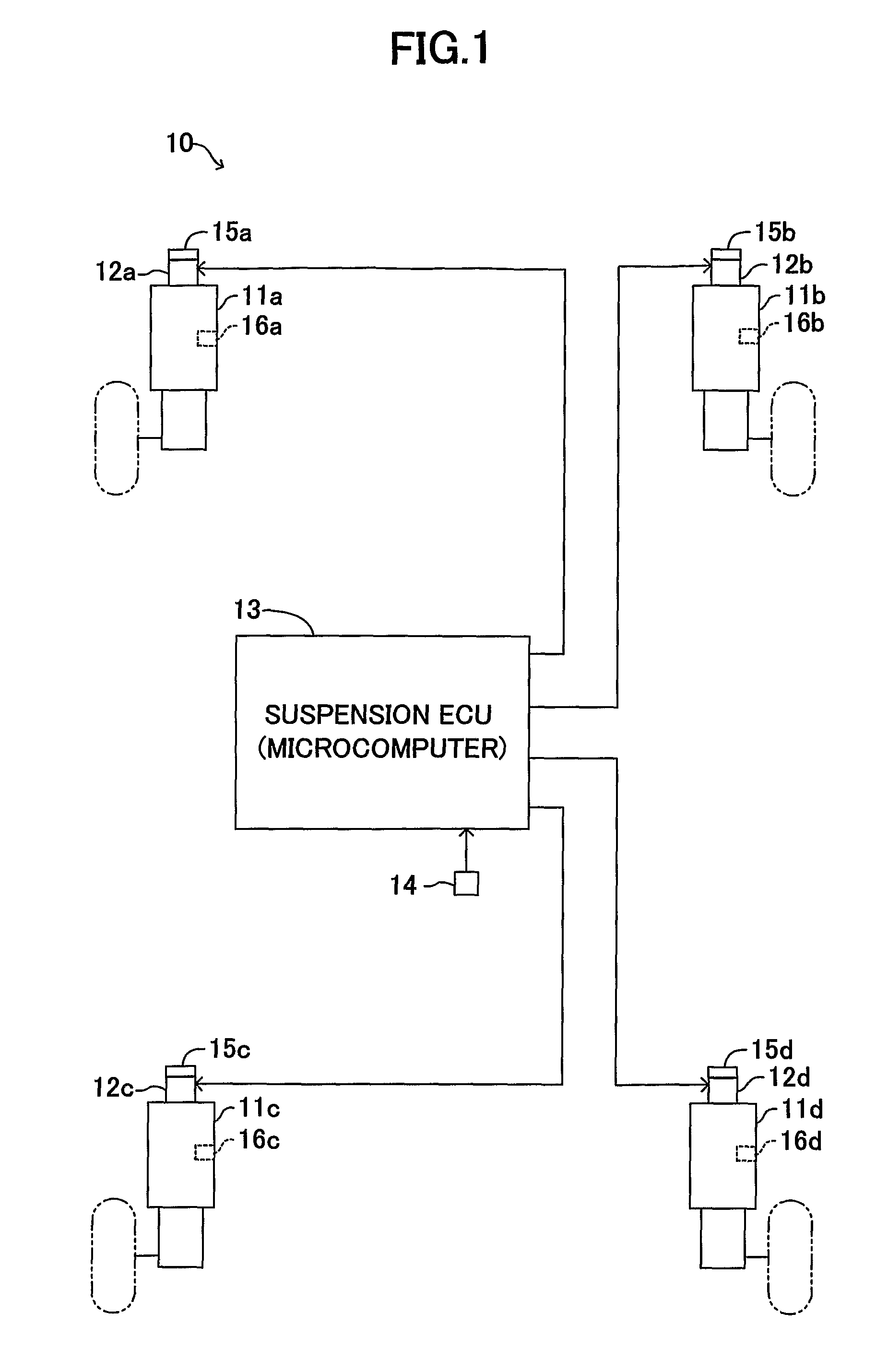Damping force control apparatus for vehicle
a control apparatus and vehicle technology, applied in the direction of brake systems, cycle equipments, instruments, etc., can solve the problems of adversely affecting the maneuvering stability of the vehicle, unnecessary vibration in the vehicle body, etc., and achieve satisfactory maneuvering stability and rapid maneuvering
- Summary
- Abstract
- Description
- Claims
- Application Information
AI Technical Summary
Benefits of technology
Problems solved by technology
Method used
Image
Examples
first embodiment
a. First Embodiment
[0031]A damping force control apparatus for a vehicle (hereinafter referred to as a “vehicular damping force control apparatus”) according to an embodiment of the present embodiment will now be described in detail with reference to the drawings. FIG. 1 schematically shows the configuration of a vehicular damping force control apparatus 10 common among embodiments of the present invention. This vehicular damping force control apparatus 10 includes shock absorbers 11a, 11b, 11c, and 11d which connect a vehicle body and wheels (left and right front wheels and left and right rear wheels) of the vehicle.
[0032]The shock absorbers 11a, 11b, 11c, and 11d include rotary valves (electrical actuators) 12a, 12b, 12c, and 12d, each of which changes seamlessly, for example, the diameter of a flow path for working fluid (oil, high-pressure gas, etc.). Although detailed description will be omitted, each of the rotary valves 12a, 12b, 12c, and 12d includes an unillustrated electri...
second embodiment
b. Second Embodiment
[0086]In the above-described first embodiment, description was provided for the case where the vehicle body is in the pitching state as a result of input of a road surface disturbance only to the shock absorbers 11b and 11d (or the shock absorbers 11a and 11c) on the turn-locus outer side to which the smaller damping force Fo is distributed in a state where the total demanded damping force F is distributed based on the distribution amount X which is proportional to the lateral acceleration Gl. In this case, the demanded damping force Fo of the shock absorbers 11b and 11d (or the shock absorbers 11a and 11c) on the turn-locus outer side is set to be the vibration-suppressing damping force Fz, and the demanded damping force Fi of the shock absorbers 11a and 11c (or the shock absorbers 11b and 11d) on the turn-locus inner side is determined by subtracting the vibration-suppressing damping force Fz from the total demanded damping force F. Thus, the shock absorbers 11...
PUM
 Login to View More
Login to View More Abstract
Description
Claims
Application Information
 Login to View More
Login to View More - R&D
- Intellectual Property
- Life Sciences
- Materials
- Tech Scout
- Unparalleled Data Quality
- Higher Quality Content
- 60% Fewer Hallucinations
Browse by: Latest US Patents, China's latest patents, Technical Efficacy Thesaurus, Application Domain, Technology Topic, Popular Technical Reports.
© 2025 PatSnap. All rights reserved.Legal|Privacy policy|Modern Slavery Act Transparency Statement|Sitemap|About US| Contact US: help@patsnap.com



